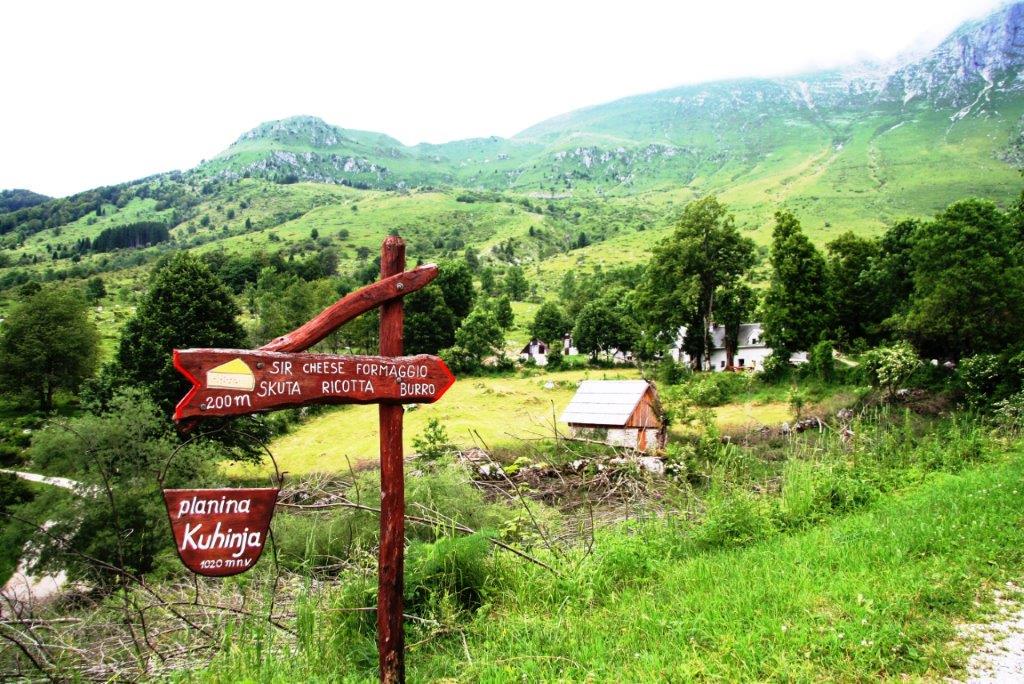
To facilitate the start, and with the purpose of promotion, they have received EUR 15,000 through the European Tasty Cheese Tour project, the participants of which come from Spain, Italy, Latvia, Malta, Bulgaria, and Sllovenia. "The goal is to raise the added value of cheese, and initiate a new wave, new wind, and lure new tourists. Presently five countries are involved at the joint promotion of cheeses with protected designation of origin. All the municipalities are willing to cooperated, even without financial sources from the project," Peter Domevšček from PRC explained.
The letter of intent of establishing milk paths has been signed not only by the Planika dairy, but also by 11 of the 20 mountain pastures of the Posočje region producing two sorts of cheese with protected designation of origin - Tolminc made of cow's milk, and cheese from Bovec made of sheep's milk. The new tourist product - organized visits to mountain pastures, with presentation of the work, and tasting - should begin next year already.
"It is a much needed product, as a great number of tourists ask about the cheese, and where it is possible to taste it, buy it; they would also like to see the mountains, but presently the offer of such type is rather limited. Once the offer is expanded thanks to cooperation of the inhabitants of the mountains, tourist guides and agencies which would market the product, it could be very successful indeed," Mateja Leban, the acting manager of LTO Sotočje, explained.
Mountain pastures stopped dying
The demand is large, Nataša Kocič from the Tmin Tours tourist agency agrees: "We have already offered programmes for tasting dairy products combined with sightseeing of the Posočje region sights. But it could be interesting also as an independent product which might be offered twice a week, with participation of the local guides." For the local guides PRC will organize workshops, and education until April.
It is positive that mountain pastures have stopped dying, and are even becoming more and more alive. The more accessible ones, e.g. on the mountains below the Krn range, accessible by car up to the altitude of 1000 metres, sell a lot of their products to hikers passing by. "We really are the lucky ones, there is a lot of mountaineers here. We are satisfied - should we be forced to sell our products in a different manner, it would be much more difficult for us," Mojca Leban from the Lom and Podkuk mountains explained; the path to Razor hut leads over there.
The others hope for a better profit through organized visits, Marjan Lipušček from the Sleme and Mederja mountains above the Tolminka river valley explained: "We sell only a small part of our products at the mountain - we sell approximately 20 wheels of cheese during one season. Probably the share of cheese sold on the mountain would also increase. But the itinerary should be well coordinated, as we don't have always the time to show tourists around."
A special map is being prepared
They will also publish a revised map Mountain pastures in the Posočje region, where 80% of all mountain milk in Slovenia is being produced. The peculiarity of the Posočje mountains is the fact that on a relatively small area - all the grazing surfaces measure less than 2,000 hectares - three autochthonous sorts are grazing (Bohinj's cow cika, Bovec sheep, and Drežnica goat). "In no other part so much milk is being processed. The largest number of mountain pastures has cows, in the Bovec area sheep, but in the last years we have also a mountain with goats in the Kanin range producing goat's milk. The variety, and the preserved tradition are very suitable for tourism," Davorin Koren trom the Triglav National Park explained.
The extremely long tradition of mountain pastures has retained also the organisation of the pasture communities, as they still preserve traditions - eg. "odpaševanje". Koren explained: "The owners of the cows take turns throughout the year, they work in the stable, perform tasks like milking and care for the pasture, while the cheesemaker is constantly present on the mountain. It is unique, nowhere in the Alps it can be seen any more." The first visits of the tourists will be organized next summer, but they have also plans for boutique two- or three-days packages.


































































